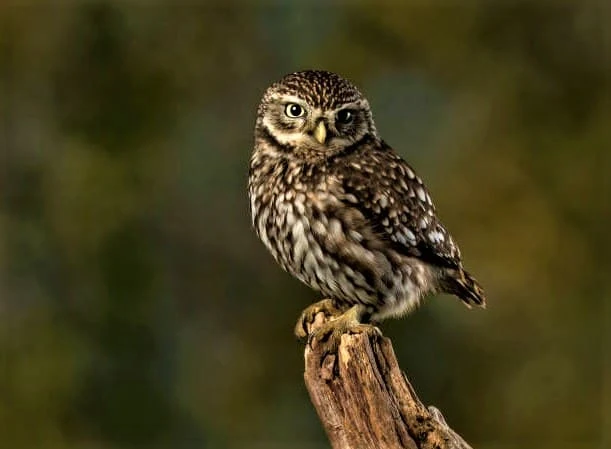Owls are ferocious birds of prey that not only ravenously attack their prey, but are also dangerous to humans and livestock. Like hawks, hawks, hawks, bald eagles, and vultures, owls are birds of prey, which means they prefer to hunt and eat other animals rather than seeds or worms. They are not caring birds thought to be owls, in fact they are extremely ferocious birds of prey that not only hunt and capture small animals but also attack humans in an attempt to protect their young, nests and territories.

The snowy owl is active during the day and night and generally does not attack humans unless it is close to their nesting sites due to its extremely territorial awareness. Great Horned Owls are very territorial, so if humans enter their nests, they will target the head and face with their sharp claws. These birds even attack large dogs and other predators, including humans, if their nesting areas are threatened.
An owl will definitely attack any person it considers dangerous to its cub, partner, or even its hunting territory. An owl usually attacks only those animals that are small enough to be carried away. If an owl decides to attack a pet, it can almost certainly cause serious injury and even kill a cat or dog.
Even if owl attacks do happen, it's probably not something your little head should be worried about. The snowy owl is a large bird that can be over 18 inches tall, so it can be quite intimidating if it attacks. If the barn owl feels threatened enough to attack, it will first make a hoarse hiss to warn you of an impending attack and startle you.
Some owls, such as the great horned owl, are large enough to be a danger to pets and sometimes attack small dogs and chickens if left unattended or exposed outdoors. Small owls may be wary around humans, but owls such as barn owls and long-eared owls are known to be more suitable for those who keep them as pets. Owls are generally not aggressive towards pets, but some species, such as the eagle owl, snowy owl and great horned owl, are known to attack animals that get too close.
Owls have been known to pounce on unsuspecting rodents for dinner, but they will never attack humans unless they feel threatened or provoked. Owls have been known to prey on rodents such as rats and mice, so if you have a cat or small dog nearby, they may go on the attack. The eagle owl, known for attacking small livestock, can kill a cat with a single swipe of its claws, but other owl species are unlikely to pursue cats unless threatened or preying on another animal nearby.
An owl is unlikely to attack an adult who is not trying to annoy her, so most people are safe from their claws, even if they approach her with bad intentions. The owl can be quite dangerous if it keeps you in sight, and some attacks even end in death. As soon as people learn that they live in all 50 states of America, the first thing we are asked is whether they are dangerous to humans.

Barn owls are not dangerous to dogs because they only weigh about one pound (453.59 grams) and cannot attack or kill animals larger than themselves. According to biologist Dan Rauch, tawny owls are not considered aggressive, although all wild animals attack when threatened. While striped owls are territorial all year round, this increases if it occurs during mating season, where the striped owl will attack anyone it deems a threat to its young.
The strange case of the barred owl that killed a woman in a violent attack in 2003 certainly shows how destructive barred owls can be. Yes, owls are extremely dangerous birds of prey that aggressively attack owl targets with believable damage and wounds. Equipped with extremely sharp claws, these birds can savagely attack a target, inflicting serious injury. An incredibly powerful predator, the great horned owl has extraordinary predatory abilities that can harm its target species.
Known for its loud attacks, the great horned owl is known as the sky tiger and is rightfully considered a predator both on land and in the sky. The great horned owl is fearless and aggressive and often attacks larger and heavier prey than itself, including cats, skunks, and porcupines. This owl frequents cities and is therefore near humans more often than other owl species, which may contribute to their likelihood of being attacked. Notable attacks by great horned owls include an Oregon runner being shot in the scalp, a common attack tactic for this owl as it targets the face and head when hunting large animals.
Most owls are mostly limited to eating small rodents like mice and moles, but they also eat reptiles, amphibians, insects, and even baby rabbits and hares. One of the most common owls in the Washington area, the tawny owl feeds primarily on small mammals, amphibians, reptiles, and invertebrates.
sharp talons attack people large birds nest site small birds prey animals owls are smaller birds bubo virginianus frequent targets owls hunt small pets snowy owls hunting grounds screech owls attack predatory birds large hawks dangerous thing night hunters strong talons many hawks every time towards humans although attacks smaller dogs food chain.
